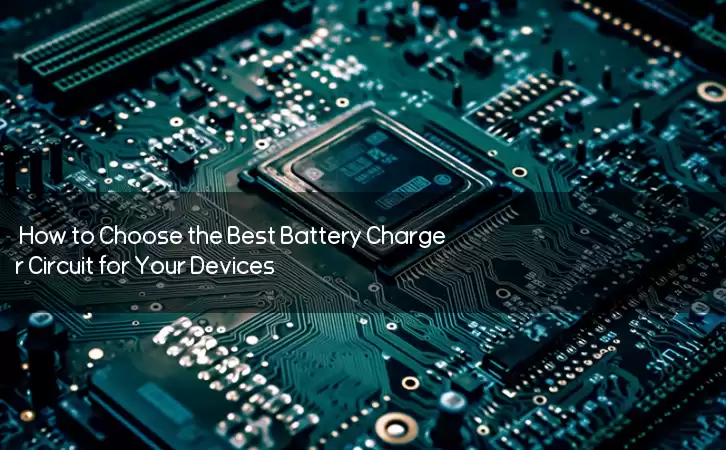Information Center
How to Choose the Best Battery Charger Circuit for Your Devices?
Published:2023-07-12 00:34:06 Author:Green WCND Views:49A battery charger circuit is an essential component for ensuring seamless operation of a wide range of devices. With the increasing reliance on portable and rechargeable devices, such as smartphones, tablets, and laptops, the need for efficient and reliable battery charging circuits has become more pressing.

A battery charger circuit can be designed using several different technologies, including linear chargers, switch-mode chargers, and pulse chargers. The choice of technology depends on the specific charging requirements, such as input voltage, output voltage and current, charging time, and battery chemistry.

Linear chargers are simple in design and are suitable for charging low-capacity batteries. They rely on a constant current source with a series resistor to limit the current flow. The disadvantage of linear chargers is that they generate a lot of heat during the charging process, which can lead to performance issues and safety concerns.
Switch-mode chargers, on the other hand, use a switching regulator to convert the input voltage to the desired output voltage. They are more efficient than linear chargers and generate less heat, making them ideal for applications requiring high current and fast charging times. However, they are more complex in design and require additional components, such as inductors and capacitors.
Pulse chargers use a high-frequency pulse waveform to charge the battery. The pulses create a series of chemical reactions that recharge the battery more rapidly and efficiently than linear or switch-mode chargers. They are especially useful for charging lead-acid batteries used in automobiles, boats, and motorcycles, as well as for backup power applications.
Regardless of the technology used, a battery charger circuit must have certain features to ensure safe and reliable charging. These include overvoltage protection, overcurrent protection, short-circuit protection, and thermal protection. Overvoltage protection prevents the battery from being overcharged, which can damage the battery and cause a safety hazard. Overcurrent protection prevents excessive current from flowing through the battery, which can also damage the battery and cause overheating. Short-circuit protection prevents damage to the charger circuit if the battery is shorted. Thermal protection prevents the circuit from overheating due to prolonged use or faulty components.
In conclusion, a battery charger circuit is an essential component for powering portable and rechargeable devices. The choice of technology depends on specific charging requirements, such as input voltage, output voltage and current, charging time, and battery chemistry. A battery charger circuit must have certain features to ensure safe and reliable charging, including overvoltage protection, overcurrent protection, short-circuit protection, and thermal protection. With the increasing demand for portable and rechargeable devices, the development of efficient and reliable battery charging circuits is critical for ensuring smooth operation and user satisfaction.
IntroductionGolf carts serve as vital transportation tools on golf courses, and their performance and reliability are crucial for enhancing player experience an···
The battery pack is the heart of a golf cart, silently powering every acceleration and climb on the green. However, battery degradation often goes unnoticed, mu···
The battery pack is the heart of a golf cart’s power system, yet maintaining it has long been a challenge for technicians. Traditional troubleshooting methods—···
For golf course managers, ensuring smooth and efficient operations is crucial for providing a memorable experience for golfers and maintaining the reputation of···





